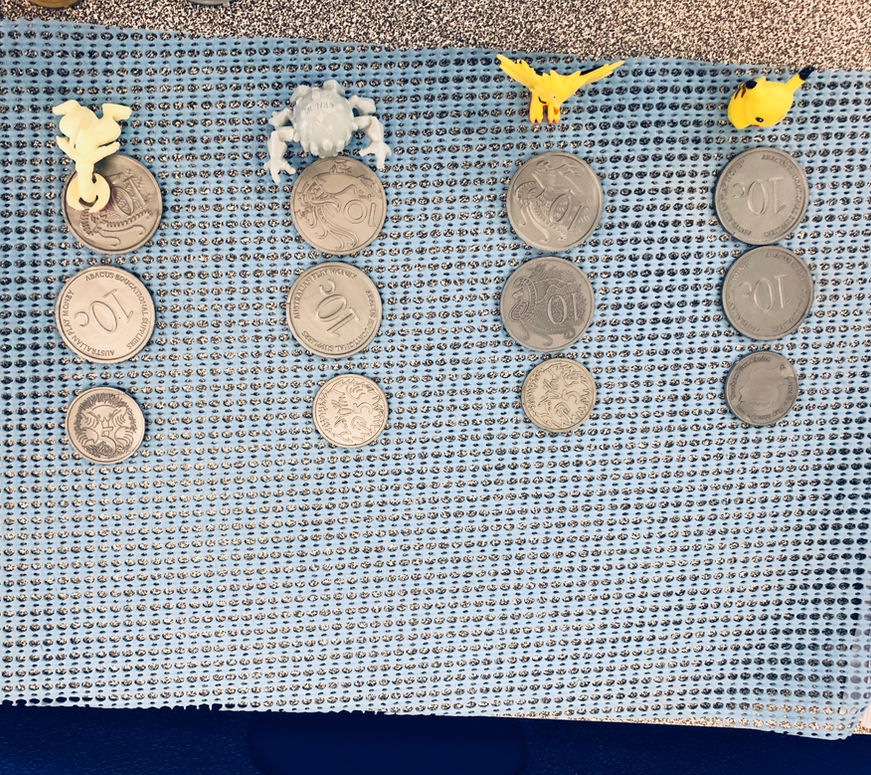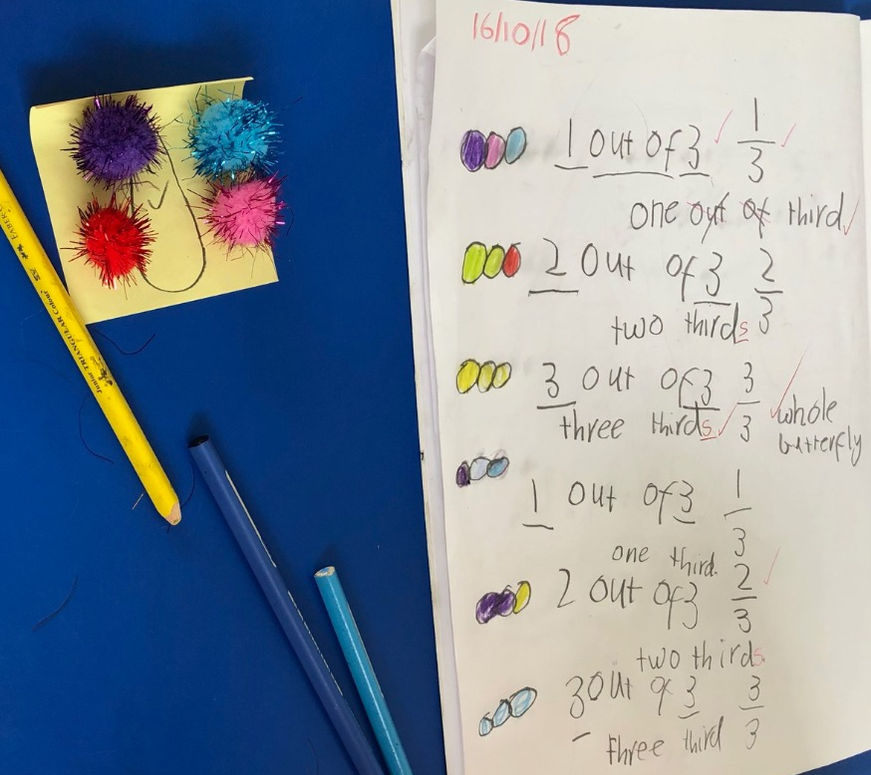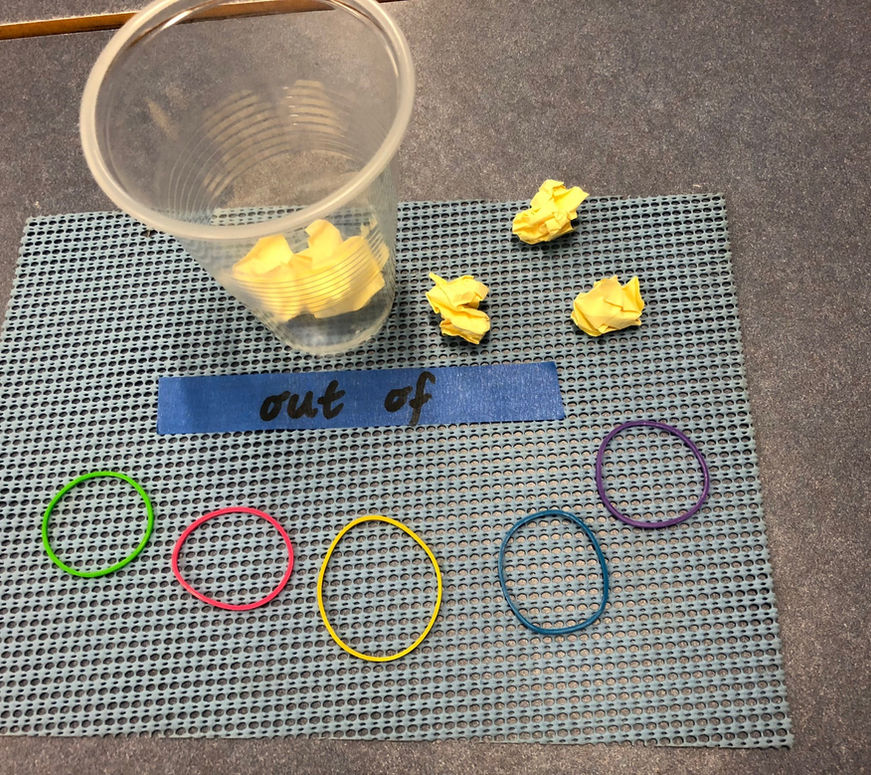

- 5-minute morning routine
- Developmental staircase of 88 sequential skills developed by Australian numeracy coaches
- Point-of-need fluency interview and whole-school data tracker for yearly handovers and cohort view
Whole-school approach to fluency - for free!
Five minutes of the day is all fluency is worth, and we give our fluency approach away for free because it is worthless without deep conceptual understanding and reasoning developed through concrete numeracy tasks first. So for our member schools, the fluency routine will offer great value, following the delivery of hands-on numeracy for at least one year first. However, for non-members, it will not be worth a cent without sequential, hands-on units to develop the conceptual understanding that must precede fluency, in order for this to involve genuine number sense (not rote recall without meaning).
Critical tips for teachers and leaders
before starting:
- This is a 5-minute morning routine (5-minute YouTube timer), not a main lesson or a warm-up game.
- Use 'write and wipe' sleeves. Students can self-correct with calculators from skill 22 onwards, to reduce printing and teacher workload. Earlier skills (Ninja Number Sliders and Missing Part Cards) are assessed orally when students show readiness, similar to a mini running record or sight words.
- Write on the date that you gave the sheet to that student to keep track of how long each student has been working on a skill (in pen, before sliding it into their write and wipe sleeve).
- Students need to complete the page fully and accurately within 5-minutes for three days in a row to progress to the next skill. Use small teachable moments in the main lesson and the 5-minutes to support small groups or individual students (linked unit plans).
Developmental staircase of fluency skills
Starting the 5-minute morning routine
Victorian Curriculum Version 2.0 Links
Australian Curriculum
V9 Links
WA Curriculum
Links
NSW Syllabus
Links
5-minute morning routine point-of-need practice
in write-and-wipe sleeves
CRITICAL NOTE: This is a fluency routine - it will not replace conceptual understanding - that is what the main maths lesson should be focused on with explicit teaching with materials, real-life links and engaging stories to develop understanding, reasoning and problem-solving. Fluency is only one piece of the puzzle, and can only occur after conceptual understanding is achieved with materials.
Please see our sample lessons of sequential units that achieved 98% strong or exceeding in Year 3 NAPLAN in 2024 at our intensive PL school by focusing on building strong foundations with materials before fluency, not with sheets alone.
Font 1 Font 2
Font 1 Font 2
Font 1 Font 2
Early Skills
1-21
Skills
22-77
Extension Skills 78-88
'Hidden skill number' versions to avoid peer comparisons

Font 1 Font 2
Font 1 Font 2
Font 1 Font 2
Early Skills
1-21
Skills
22-77
Extension Skills 78-88
Ninja Number Sliders, Missing Part Cards and Fluency Interview with Whole-School Tracker
Video of the ninja sliders in action
at a Japanese Ninja House:
https://www.instagram.com/p/C5uEAQ1MmCQ/

Ninja Number Sliders Overview
Ninja Number Sliders Certificates
Missing Part Cards
Ninja Number Sliders
Tracker
Ninja Sliders Parent Note
Whole-school tracker for yearly data handover
Optional one-to-one interview or 3 quick questions
or use the starting points indicated in the Implementation Overview

IDEAL STARTING POINTS:
SHORT VERSION
Fluency
point-of-need interview
Vic 2.0 links
Fluency
point-of-need interview
Australian Curriculum
V9 links
Interview cards developed by B. Hendy
Fluency
point-of-need interview
WA Curriculum
links
Fluency
point-of-need interview
NSW Syllabus
links
Critical tips to avoid maths anxiety:
- Use hands-on numeracy tasks with enabling and extending prompts as your school's dominant approach to real-life maths. This arms students with concrete experiences, powerful visuals and real-life connections prior to applying understanding at fluency pace.
- Conduct the one-to-one fluency interview to determine each student's ideal starting point (ZPD). Handover this data to the next teacher in Term 4.
- Do not 'rank' or display where students are functioning.
- Do not ask students to test in front of the class or any peers.
- Make the 5-minutes low-stakes, using a silent visual clock timer displayed on the main classroom screen without any noise.
- Focus on and celebrate growth (how many skills the student has achieved since the start of the year) not the raw skill number.
- Use teachable moments with materials to assist students with their skill development, as it is not the sheet that will teach, it is still the teacher and the concrete manipulatives within the main maths block with sequential units.

Fluency is 5 minutes a day,
here is what the rest of the maths session could look like...

Introductory video
Download free samples from our Early Years Package
Victorian Curriculum Version 2.0 samples
WA Curriculum
samples
Australian Curriculum Version 9 samples
NSW Syllabus for K-2
-
Direct curriculum links at the start of every unit plan to each state's content and level/stage.
-
Learning intentions and maths vocabulary at the start of every lesson plan.
-
Engaging tuning-in options/hooks/stories to win students' hearts before their minds.
-
Explicit modelling using materials with photographs of numeracy coaches in classrooms and detailed student work samples.
-
Ongoing support and extension for classes with wide ranges through pre-planned enabling and extending prompts for every lesson.
-
Warm-ups, exit tickets and formative assessments to target ongoing needs and critical gaps throughout the year.
-
Proven scope and sequence that has achieved Australia's leading NAPLAN results in numeracy with 98% of Year 3 students strong or exceeding compared to 67% in the same region. Whole-school implementation support documents from high performing schools, including developmental staircases for every major number concept, lesson structure guides, practical classroom tips and ongoing planning support for teachers.
Chirnside Park PS - 2024 Year 3 NAPLAN
following consistent use of the Early Years Package for three years

Why we are giving away our whole-school approach to fluency for free?
This free resource aims to balance the discussion about fluency and spaced retrieval versus conceptual understanding. Both are critical. However, fluency can only be achieved after the battle for conceptual understanding has been won, and then only requires a consistent 5-minute morning routine, as outlined above.
This ensures the main maths lesson every day can focus on significantly richer tasks, with explicit teaching that focuses on concrete materials and visual models, meaningful real-life links and engaging stories that trigger long-term memories. These elements grow students' deep conceptual understanding, reasoning and problem-solving skills, which are critical foundations for later fluency and richer skills for life as well.
It must be noted that early number facts are not 'basic,' as otherwise these would not be so problematic in the first place. Without materials and Singapore's concrete-pictorial-abstract approach (CPA), even small number facts are very abstract for young learners and - therefore - complex for this developmental stage.
Genuine fluency is based on flexibility with mental strategies, not speed and instant recall alone. The ultimate proof is that if you put a student who cannot use near doubles in front of a developmentally inappropriate drill sheet, they will mostly resort to count all or count on (embedding less efficient strategies in the long-term), and will not learn near doubles without hands-on, sequential units focused on slow practice with materials and mastery first. Students may learn ‘instant recall’ of 6 + 7 if you drill for long enough, but ask 60 + 70 and they won’t know, because they have not been given a chance to generalise, reason or apply with materials or problem-based reasoning – they have been drilled in one fact at a time, and that is all. Maths is a brilliant shop (you buy one, you can get 100 for free), but if the teacher never shows you the discount codes with materials and real-life links, you come to see it as a very expensive shop – one where a textbook/worksheet/technology dominated main lesson approach makes you buy and memorise each item one-at-a-time.
Fluency is only one piece of the puzzle - and our results show it is achieved easily in a 5-minute morning routine, but only once genuine number sense and flexible mental strategies are developed using materials first, so that deep conceptual understanding is established. Please see our 2024 student gains and comparison to like schools at our most intensive PL school (Chirnside Park PS) on our Research-basis page.
That is why we have dedicated ten years in classrooms to developing sequential units focused on understanding, reasoning and problem-solving - Early Years Pack and incoming Years 3-6 Pack.
A critical issue in this discussion has been what is 'evidence based.' Our approach is based on the research of Emeritus Professor Doug Clarke, Professor Anne Roche and Professor Matthew Sexton (Engaging Maths); Professor Dianne Siemon (Big Ideas in Teaching Mathematics: Foundations to Middle Years); Professor Peter Sullivan (Challenging Mathematical Tasks); the coaching careers of internationally-renowned experts in primary numeracy Michael Ymer and Rob Vingerhoets; among others, who all champion the use of real-life links, materials, flexible mental strategies and number sense over textbooks, worksheets and PowerPoints.
For us, an approach cannot be evidence-based without evidence of results. Those advocating for PowerPoints claim to be evidence-based, yet have not presented Australian NAPLAN results comparable to those our approach has achieved at our most intensive member schools, including Thomastown East PS, Kinglake PS, Dandenong North PS or Chirnside Park PS over the past eight years. Please see our evidence of 15 whole-school case studies of results using a hands-on, sequential, engaging, materials-based approach to maths.
More important even than results is how students and teachers feel about maths, because if they hate it, the battle has already been lost. Students at Top Ten schools love maths, and so do teachers (but don't take our word for it - please read the feedback that hundreds of Australian schools have provided to us after using our unit plans for a year or more).
Learning numeracy for real-life is the ultimate goal, and that is something that cannot be achieved through a PowerPoint, textbook or the fluency routines set out on this page alone. It can only be achieved through a hands-on, engaging, sequential, explicit teaching approach that uses materials, emphasises understanding and reasoning, and regularly 'throws students in the deep end' with challenging problems.
As a result, we are giving away an entire approach to fluency, with 77 sequential skills (plus 11 extension-level skills when achieved at fluency pacing) for free, because fluency is of no value unless students first develop deep conceptual understanding and trust in their own mental strategies. That is what our hands-on units are about – real numeracy (not just mathematics).
We hope this resource is used with care – it will be powerful in the right hands; that is, in schools that value reasoning, problem-solving, understanding and student engagement as their first priorities in growing numerate adults who still love maths throughout their lives.
Lessons in action
Our Planning Support Packages

NUMERACY LIBRARY
WITH LESSONS
Selectively-chosen numeracy picture book titles with over 150 linked lessons that are in addition to those in the early years and years 3-6 planning packs.
All titles are organised by year level and arrive packed into concepts (place value; addition; subtraction; multiplication; division; fractions; measurement and geometry; statistics and probability).

COMPREHENSIVE EARLY YEARS PLANNING PACKAGE
Developmentally-sequenced, user-friendly
unit plans with detailed hands-on lessons for every critical skill throughout the early years. Diagnostic and formative assessments highlight points-of-need.
Lessons include enabling and extending prompts, engaging hooks, warm-ups, photographs of numeracy coaches modelling and student work samples.

CLASSROOM
MATHS TOOLBOXES




























